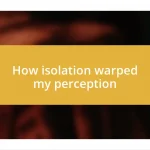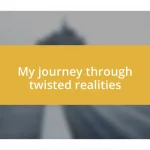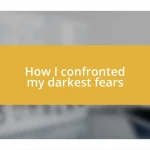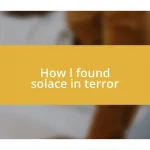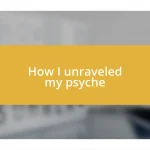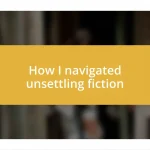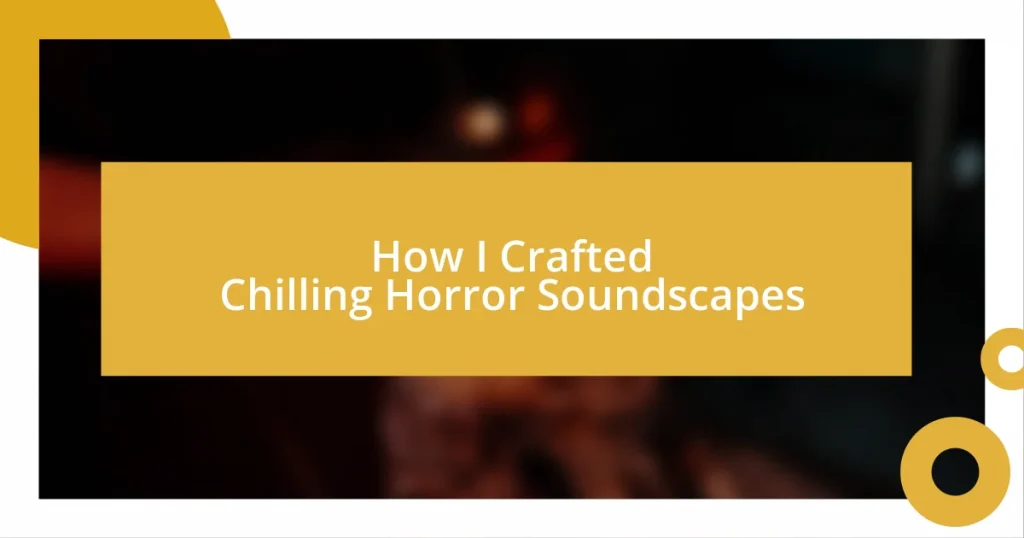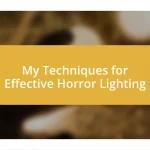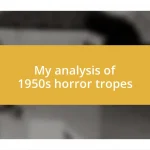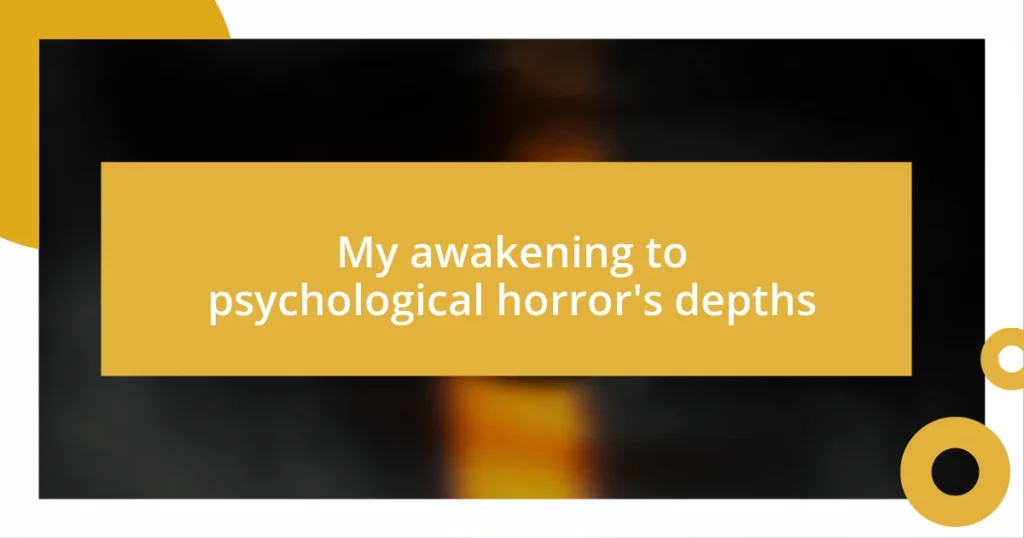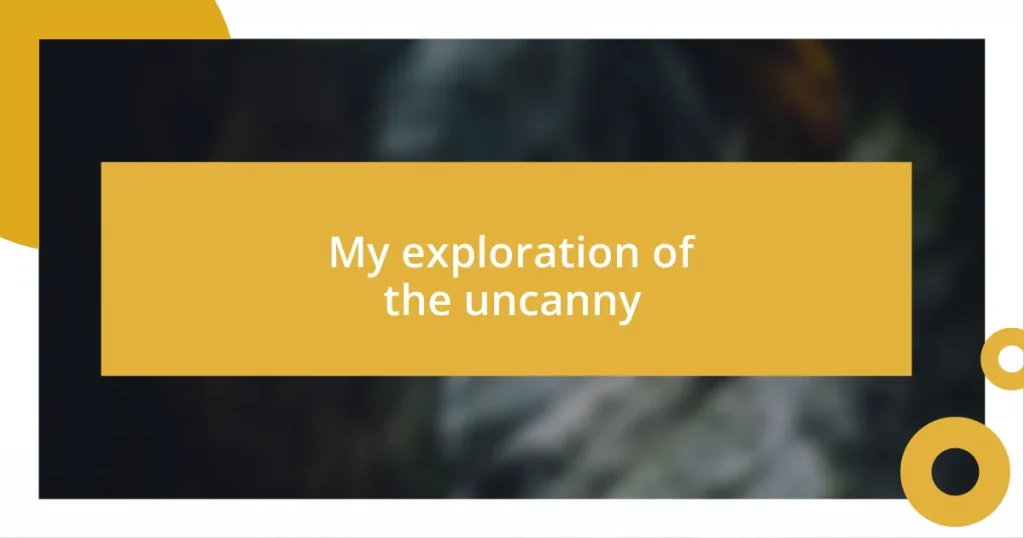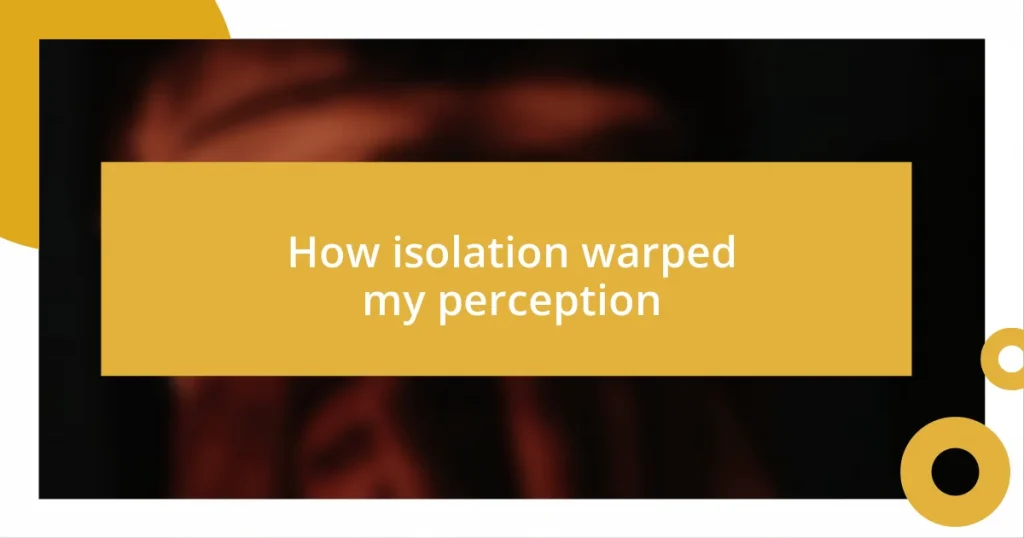Key takeaways:
- Horror soundscapes rely on psychological effects of sound, where layering, contrast, and silence create tension and evoke deep emotions.
- Effective sound design incorporates techniques such as unexpected sounds, gradual build-up, and spatial awareness to immerse the audience in fear.
- Finalizing a soundscape involves careful mixing and testing across different environments to ensure all elements contribute to a chilling auditory experience.
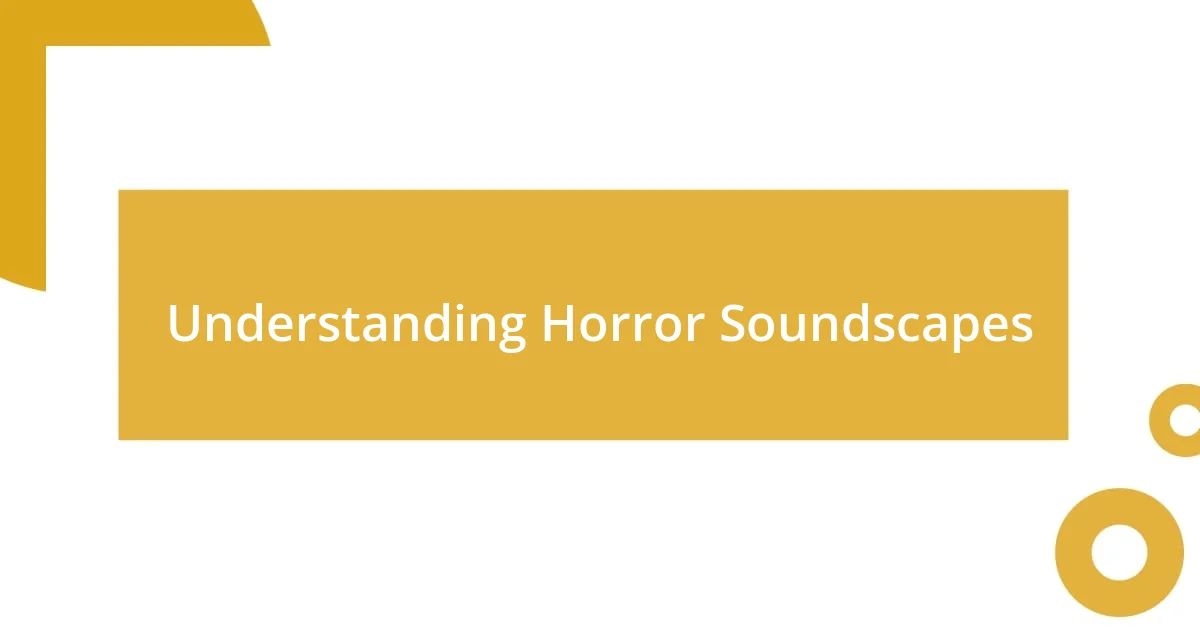
Understanding Horror Soundscapes
Horror soundscapes are like a dark symphony, crafting an emotional landscape that taps into our deepest fears. When I first dove into this genre, I was struck by how certain sounds could elevate tension instantly—as if a low rumble or a distant whisper could send chills down my spine. Have you ever noticed how your heart races at the creak of a door? That’s the magic of sound in horror, where every subtle nuance plays a role in building an atmosphere that can haunt you long after the experience is over.
Understanding the psychology behind these soundscapes is crucial. I recall a moment when I layered sounds of rustling leaves with a low drone; the mix created an unsettling feeling that lingered in the air. I couldn’t help but wonder—what is it about these combinations that evoke such visceral reactions in us? It’s fascinating how sound can tap into our primal instincts, stirring emotions that might lie dormant in our everyday lives.
Every sound, no matter how insignificant it may seem, has the potential to evoke fear. I often experiment with everyday noises, manipulating them to create an aura of dread. For instance, the distant sound of a heartbeat can make you feel isolated, as if you’re the only one in a chilling void. Isn’t it intriguing how ordinary elements can morph into tools of terror?
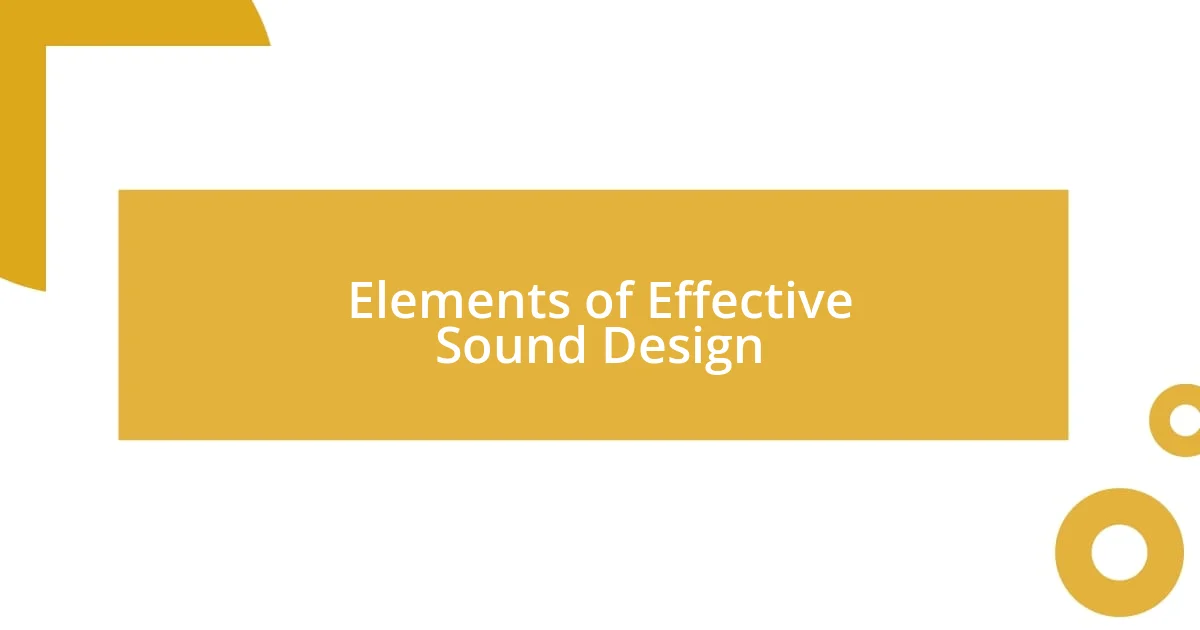
Elements of Effective Sound Design
The artistry of sound design in horror hinges on a few essential elements. For me, layering is one of the most powerful techniques. When I created a soundscape for a particularly chilling scene, I combined low frequencies with distorted whispers. The effect was almost hypnotic, drawing listeners deeper into the unsettling environment I aimed to conjure. Each layer added complexity, transforming familiar sounds into something ominous and foreboding.
To achieve effective sound design, consider incorporating these elements:
- Layering: Combining multiple sounds to create depth and texture.
- Contrast: Using stark differences in volume and pitch to surprise and engage listeners, enhancing tension.
- Silence: Strategic use of silence can amplify fear; the abrupt lack of sound can build anticipation.
- Frequency Range: Manipulating high and low frequencies evokes specific emotional responses.
- Spatial Awareness: Placing sounds in different directions can simulate a 3D environment, making the experience more immersive.
One time, I played with silence while crafting a soundscape for a darkened corridor scene. I let silence build until a single, echoing footstep echoed through the void. That moment felt palpable, and I could almost hear the collective intake of breath from my audience. It reminded me how crucial these elements are—each piece in my sound design puzzle plays a role in weaving an audial tapestry that lingers in the mind long after the experience ends.
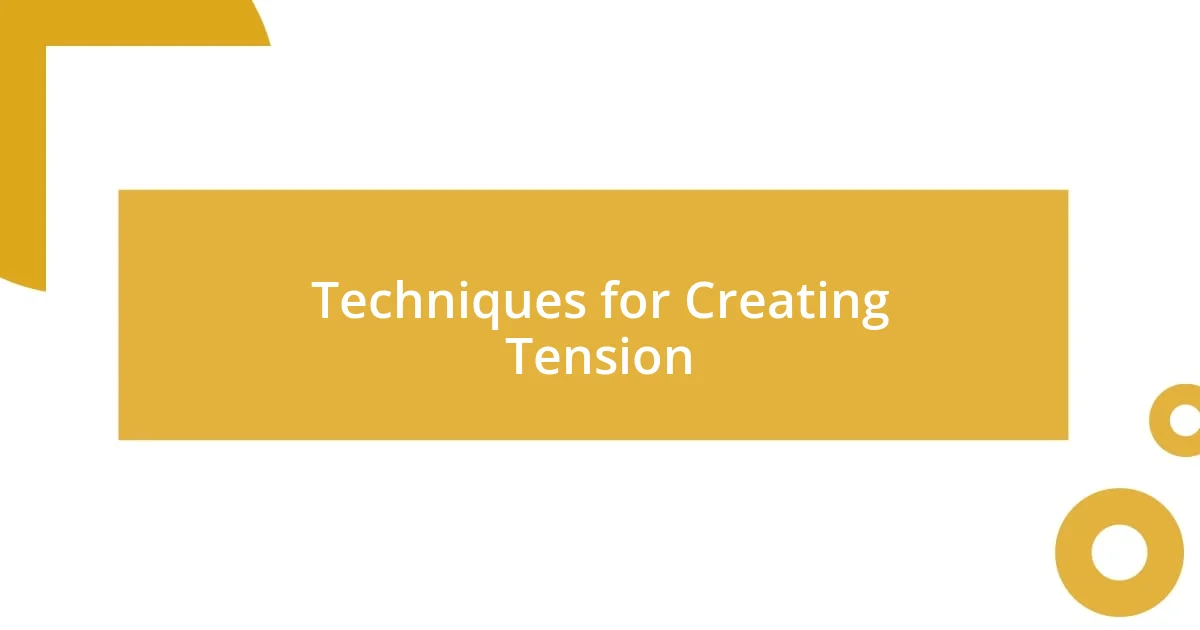
Techniques for Creating Tension
Building tension in horror soundscapes is a delicate art that involves a mix of techniques that can leave listeners on the edge of their seats. One method I often utilize is the interplay of unexpected sounds. I remember a time when I created a scene featuring an unsettling lullaby playing softly in the background, coupled with the distant sound of a child’s laughter. This juxtaposition evoked a sense of discomfort that lingered in the listeners’ minds. It’s incredible how contrasting elements can amplify that feeling of dread.
Another technique that has proven effective for me is the gradual build-up of intensity. I like to start with soft, eerie tones and then incrementally introduce harsher sounds. For example, during a recent project, I slowly layered high-pitched squeals over a drone, building the tension to a climactic moment. This gradual escalation allowed the audience to feel a growing sense of anxiety, as if something dreadful was lurking just out of sight. Have you ever felt that anticipation when the music swells before a jump scare? That’s the power of pacing.
Finally, I play with space and distance in my soundscapes, creating an atmosphere that’s immersive and disorienting. For instance, I once experimented with fading whispers that seemed to come from different directions, simulating a feeling of being surrounded. This technique draws the audience in, making them feel vulnerable as if they were entangled in the eerie sound environment. It’s a thrilling experience to witness how effective sound manipulation can be in crafting horror.
| Technique | Description |
|---|---|
| Unexpected Sounds | Create discomfort through contrasting audio elements. |
| Gradual Build-up | Incrementally introduce harsher sounds to heighten anxiety. |
| Spacing and Distance | Simulate immersion by varying sound placement. |
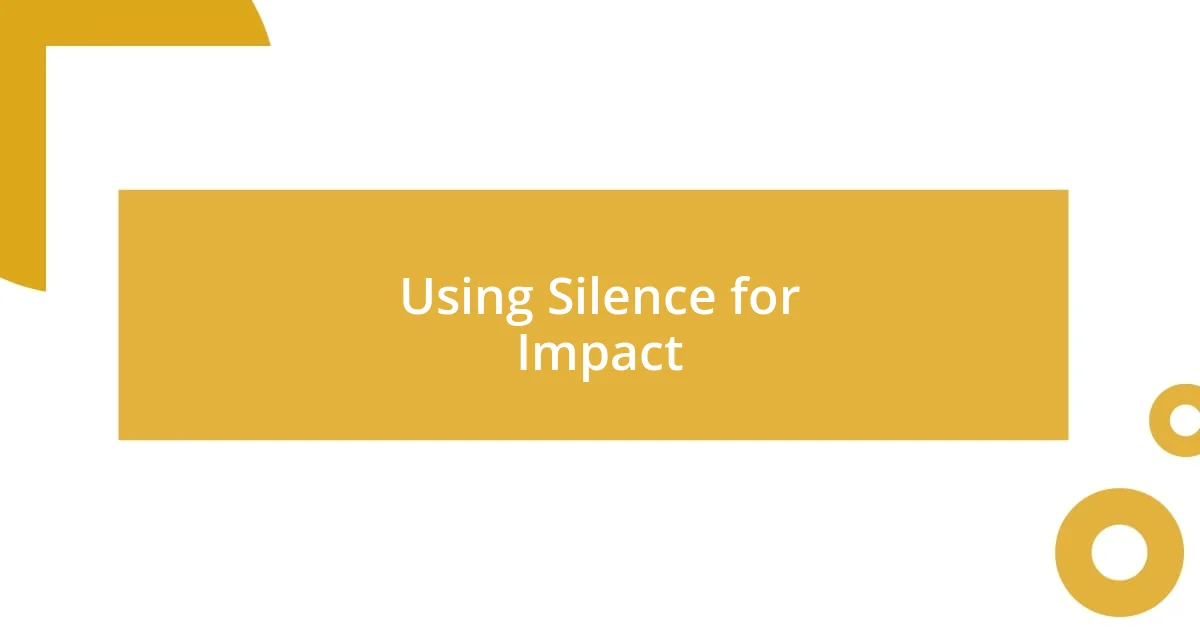
Using Silence for Impact
Using silence effectively can create a profound impact in horror soundscapes, offering a break that’s almost as unsettling as any sound. I often think of it as the calm before the storm. For instance, there was a moment in a project where I intentionally paused all background noise before shifting into a chilling revelation—it’s in these voids that listeners find themselves grasping for something, anything, to fill the silence. This heightened their anxiety and made the eventual jolt all the more terrifying.
In my experience, the contrast between silence and sudden sound can be electrifying. I once crafted a sequence where a room descended into complete silence right before an unexpected, crashing noise shattered the stillness. The listeners not only jumped but their hearts raced in sync with the sudden chaos. It’s fascinating to consider how a few moments of silence can essentially reset the emotional landscape, making any subsequent sound carry a weight that resonates deeply.
Have you ever been in a situation where the anticipation built so heavily you could hear your own heartbeat? That’s the magic of silence—it invites listeners to engage with their own fears and imaginations. By leaning into silence, I’ve discovered I can manipulate the atmosphere, allowing space for dread to swell before revealing the horrors that lurk. Each breath taken in those moments amplifies the tension, transforming a simple auditory experience into a haunting memory that lingers well after the soundscape fades.
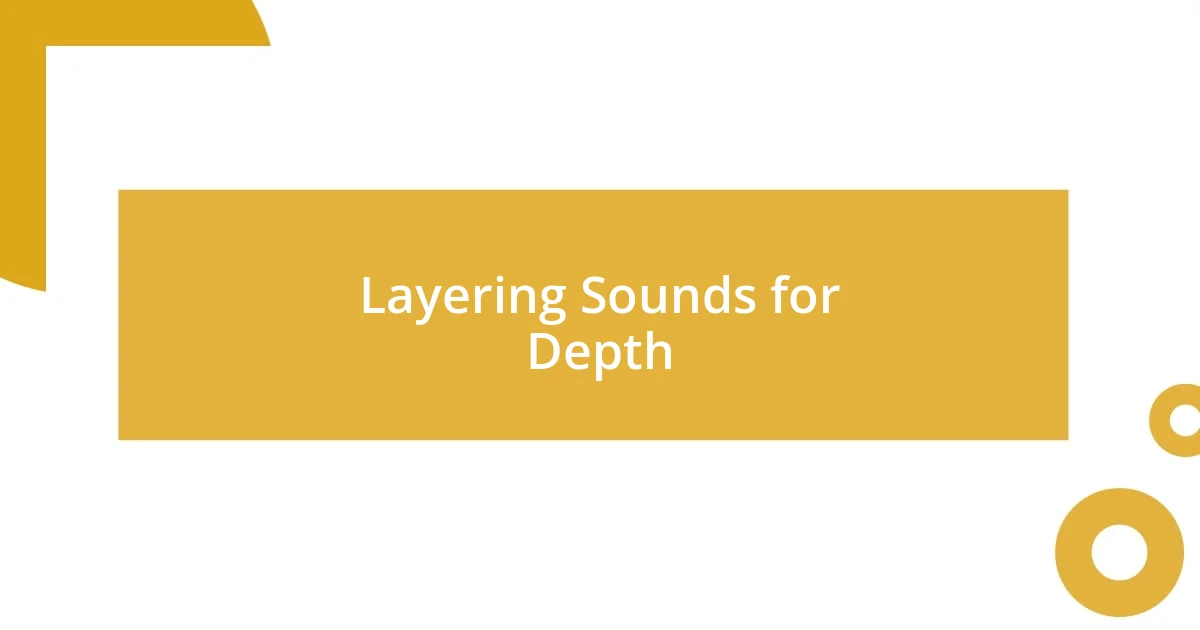
Layering Sounds for Depth
Layering sounds is one of the most crucial aspects of creating an immersive horror soundscape. I remember a particular project where I blended the sound of rustling leaves with distant thunder. The combination made the listener feel as though they were outside on a gloomy night. It’s amazing how the right layers can conjure vivid imagery and evoke emotions—like that foreboding feeling when you’re alone in the woods.
To craft depth, I often incorporate multiple elements that work in harmony, but also contrast with one another. For instance, layering the eerie sound of a creaking door with a soft, melancholic piano line creates a dissonance that sends chills down the spine. It’s in these layers that I find so much potential for storytelling. Have you ever heard music that instantly transports you to a different time or place? That’s the power of layered sounds; they can create entire worlds, resonating with our deepest fears.
I also like to experiment with different frequencies. Adding low-end rumbles beneath higher-pitched sounds can create a sense of unease that feels almost physical. There’s a haunted house project I worked on where I used a low, pulsating bass under a choir of ghostly voices, and the effect was startling. It was like being enveloped in a suffocating embrace, making the audience feel trapped in a nightmare. This layering technique gives a rich texture that enhances the overall horror experience, drawing listeners deeper into the realm of fear.
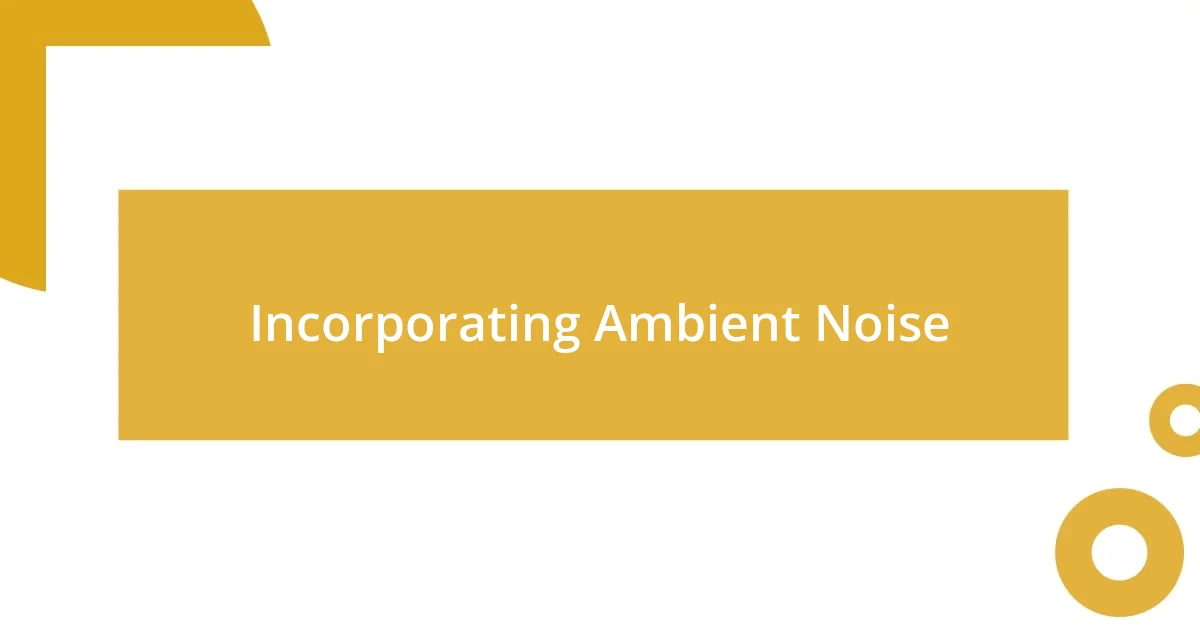
Incorporating Ambient Noise
In my journey of crafting horror soundscapes, I’ve learned that ambient noise serves as the foundation upon which fear can flourish. I vividly remember a specific scene where I filled the background with the unsettling sounds of distant whispers and intermittent wind gusts. That gentle yet haunting layer of sound enveloped the listener, making them feel as though unseen figures lurked just beyond their line of sight. Isn’t it curious how something as subtle as a breeze can evoke a sense of dread?
Ambient noise doesn’t just add texture; it shapes the listener’s psychological experience. One of my favorite tricks is to blend sounds that seem innocuous at first, like the soft ticking of a clock or the rustling of papers, with more ominous undertones. During a project, I once incorporated the sound of a ticking clock against the backdrop of faint, echoing footsteps. The effect was chilling—it transformed a mundane moment into one rife with tension, encouraging listeners to imagine what might be lurking just out of reach. Have you ever noticed how everyday sounds can suddenly feel sinister when placed in the right context?
Moreover, I’ve found that the placement and volume of ambient noise can significantly impact the overall atmosphere. For example, in a recent short film project, I intentionally lowered the volume of a distant thunderstorm while increasing the sound of a barely audible heartbeat. This deliberate choice made the thunder feel more like an impending threat, while the heartbeat drew the audience in, making them acutely aware of their own rising anxiety. It’s fascinating how strategically incorporating ambient noise can create a psychological interplay, immersing the listener in fear while leaving them yearning for resolution.
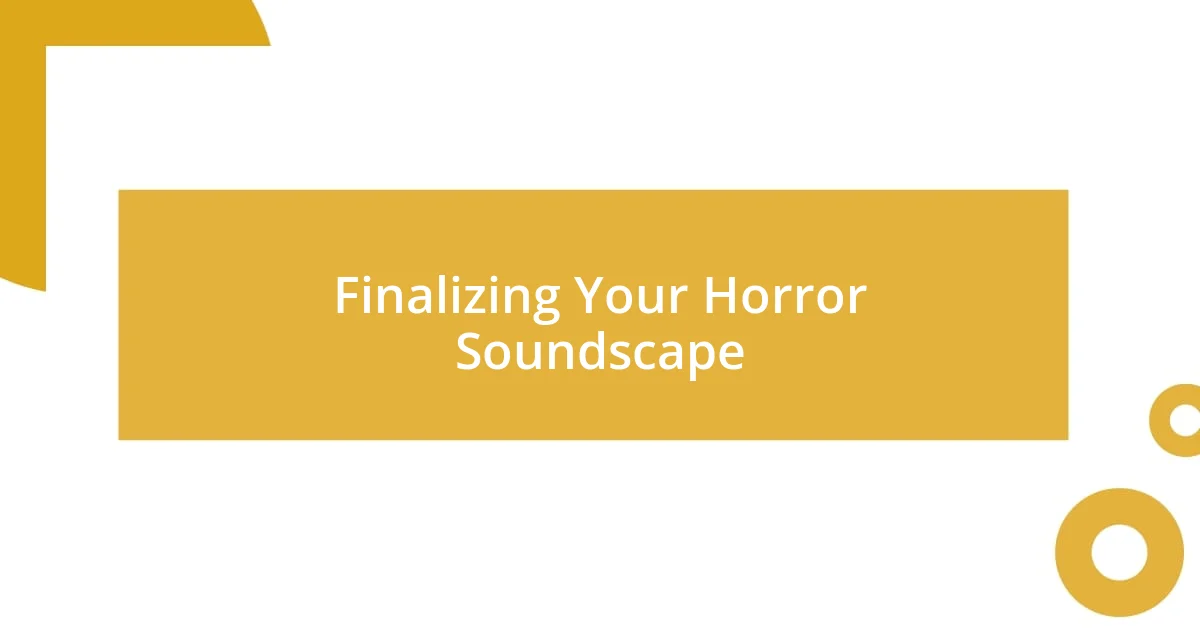
Finalizing Your Horror Soundscape
As I approached the final stages of crafting my horror soundscape, I found that the finishing touches were crucial to elevating the overall experience. One project stands out where I experimented with fading in and out certain elements, allowing eerie silence to punctuate moments of tension. It’s incredible how just a breath of silence can amplify the anxiety; it leaves the listeners on edge, waiting for something to happen. Have you ever felt that tension build when silence permeates the sound? It’s like the calm before the storm.
During the finalizing process, I also dug deep into the mixing—balancing the various layers to ensure that no single sound overshadowed the rest. I recall spending hours tweaking the levels on a soundscape during a haunted maze project. I wanted the unsettling whisper of spirits to just peek through the heavier background rumbles of thunderous footsteps. When I finally achieved that delicate balance, I could feel the tension and fear rise as the audience stood frozen in anticipation. Doesn’t it feel powerful when every element serves its purpose?
Finally, listening in different environments is essential. I often plug my soundscape into various playback systems—headphones, speakers, and even my car’s audio. On one occasion, I discovered an unexpected artifact: a faint rustle that went unnoticed on studio monitors became hauntingly apparent through my car speakers. This experience reminded me how crucial it is to fine-tune details for multiple listening environments. Isn’t it fascinating how sound can alter depending on the space? Each adjustment made brings you one step closer to creating that spine-chilling atmosphere that lingers long after the sound fades away.


